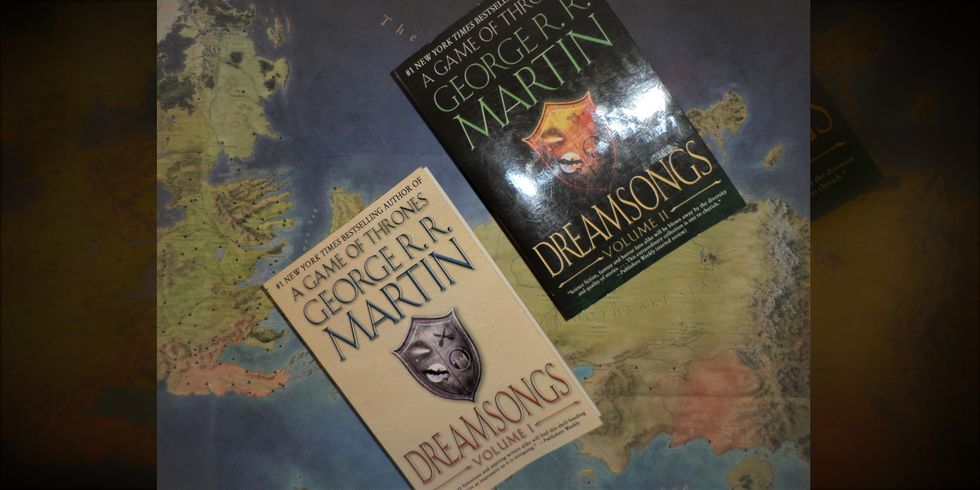Upon reading the compilation of George R. R. Martin's short stories written in his early career, I was shocked to find a lot of similarities between his science fiction short stories and the "Song of Ice and Fire" series. Although Martin originally wanted to write a science fiction novel titled "Avalon," which would eventually evolve into "A Game of Thrones," I felt like that origin was just the surface of what Martin could have written. Considering how most of his science fiction work did tend to have a fantasy element to them, the themes and the settings within his science fiction universe were hard to miss that can be found in the "Song of Ice and Fire" series. Even the exact names can provide important clues.
Earlier in his career, Martin wrote science fiction taking place in a myriad planets with their own unique characteristics and history, just as much as he depicted every Westerosi House and their regions with the same uniqueness. One of the unique qualities did stand out to me in one of the Haviland Tuf short stories named "Guardians" which described one of the sea creatures as a "grey kraken." I thought that detail stood out because one of the Westerosi Houses is called "Greyjoy" and their sigil consists of a kraken.
Since "A Game of Thrones" was originally meant to be a science fiction novel titled "Avalon," I found it interesting that one of the planets in Martin's science fiction universe was named Avalon. A planet called the Ice Wagon, in "Bitterblooms," has a natural phenomenon called Deepwinter, which is a very long winter which Shawn and her family have to prepare for. This can easily parallel to both the fact that Westerosi winters can last for years and the Stark's ominous motto "Winter is Coming." A major difference is that there are no direwolves but vampires.
But the similarity that sliced out my tongue with an arakh and left me speechless was the mention of a Dothrak Empire which appeared in Martin's unreleased short story "Dark Gods of Kor-Yuban." Although in the "Song of Ice and Fire" series, the Dothraki are a nomadic tribe with their only polity resembling the cities they plunder being Vaes Dothrak. Another similarity hit when one of the characters in that short story was named Barristan the Bold, which is also the name of one of the most well-respectable characters in the "Song of Ice and Fire" series. I found it rather unfortunate that this story was never released, because his colleagues ridiculed it when they read it. Well, I would guess that Martin got the last laugh. (Of course, there is a slaver in "The Glass Flower" named Khar Dorian).
In "The Lonely Songs of Laren Dorr," it revolves around a man who lives in a world which serves as his prison by "the Seven." Since they are described as having god-like powers, it can definitely be tied to the seven gods of Westerosi religion. In fact, the fact that the title of the story and the novella "A Song For Lya" have the word "song" in their names should imply that Martin thought this out. That's just within the titles, for there was a character who tells her cyborg companion in "The Glass Flower" that "In the game of mind, your lies will be stripped from you," which can easily parallel to Cersei's forewarning to Lord Eddard Stark by essentially referencing the title of the book and the television series.
The brutality that is associated with the "Song of Ice and Fire" series can definitely be seen in "Sandkings," which is about a man who owns these ant-like creatures that have the intelligence to build a civilization filled with sand castles. They have also been known, like humans, to engage in warfare, make alliances, and literally worship their owner as their God. In the "Beasts For Norn," there are Houses that host animal-fighting rings, which bears similarities to the Houses of the cities of Slaver's Bay that host gladiatorial battles consisting of slaves and animals.
Martin admitted that he is not original with his ideas, nor is any writer, not even William Shakespeare. It would not surprise me that Martin's science fiction work and his fantasy magnum opus are literary cousins, especially since science fiction and fantasy are genres that coexist within the umbrella genre--speculative fiction. From the names to the characters and settings, it is clear that Martin had plenty of themes to inherit for his epic series. This interconnection made me realize that the path to creating epic works consists of small steps rather than a great leap.
















